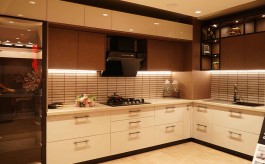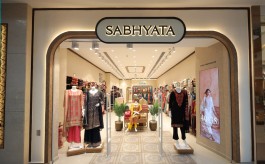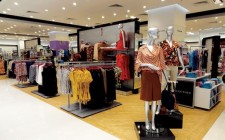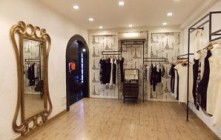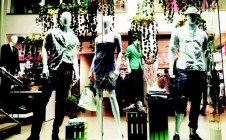Mannequin Special: The Designers' point of view
By Dipanjan Mukherjee | Vjmedia Works | July 24, 2013
Three independent Indian designers speak on a range of aspects related to mannequins. Read on...
 Sanjay Agarwal,
Managing Director at FRDC
The need for mannequins
Sanjay Agarwal,
Managing Director at FRDC
The need for mannequins
Mannequins entice customers; they provide a real perspective to the customers so that they can visualize the actual impression of the merchandise before purchasing.
The emphasis on mannequins in a store design concept
We give a lot of importance to mannequins; we generally integrate mannequin in a store by placing them in strategic positions. We feel it shouldn't be restricted to the window display area. Rather, the window should be kept minimal with lesser number of mannequins infused into it, while the inside of the store should flaunt more mannequins.
The cost of mannequins for a typical premium fashion store as a percentage of the overall spend on the store fit-out
It's a very difficult brand position; usually the overall cost ends up at 3 percent.
Luxury brands' approach to mannequin design and development
Luxury brands visualize the person for whom the garments are designed and then they tailor the whole shape and size and finally the mannequin is customized.
Challenges in design adaptation or localization of global concepts
Most of the premium brands import mannequins, but the lesser known and cost conscious brands take up the local route. They especially go for whatever is available in the local market and they try to acclimatize it. Cost being a major constraint; the local brands have had to settle for the adaptation of the original mannequins.
The threat of ecommerce and videos to mannequin styling
Mannequins can be displayed in varied positions in a store depending upon the brand's philosophy. Mannequins give a very realistic view, while the ecommerce medium has a certain limit. It's more like seeing a car in a video and buying it. So, you just can't
replace mannequins with ecommerce.
Asha Sairam, Core Design Team, Lotus
Brands vs Mannequins
Typically we have used mannequins in fashion boutiques, garment stores and multi-brand outlets. When garments are hung on a hanger, they do not give you a sense of what the garment looks like or will feel like when put on a human body. Mannequins give one a silhouette of the garment, give posture to the garment and a feel of what it will look like when draped on a human body. They help the consumer decide on the garment before making a purchase.
Also, when a mannequin is used as a device in shop windows and within the store, it helps visual merchandisers put together the look of the season. It helps them represent the trends of the season in a better way with the help of this device (mannequin). Hence, it becomes a very good tool by which you can communicate the trends for a particular season. And for the shoppers, who are not style savvy and who do not knowhow to compose a look, mannequin plays an essential part here.
Luxury brands vs Mannequins
For high end fashion boutiques, the use of a mannequin can be done in an interesting manner. In our experience, they almost become sculptural pieces in the middle of the store. This is so because the mannequin works with the language of the store. They blend into the background of the store and also help the garment stand out: bring out the drapery and flow of the garment. The Gaurav Gupta store in Emporio Mall (by Lotus Team) in Delhi is a classic example where the mannequins have been used in a creative manner to bring out the brand identity. In a nutshell, it is the mannequin that acts as an essential tool to allow the designer to be expressive.
Challenges
•The quality of mannequins that we ge in India is not sound and up to the mark. Also, there aren't too many people who have a ready collection of mannequins.
• Cost is also another issue. We have worked with visual merchandising agencies and they too prefer to import mannequins. So it generally comes down to a choice of the posture that you would like, how easily the mannequin can be fixed and with what ease can a garment be draped on it.
• In a high end fashion store, the mannequin becomes an integral part of the interior experience. Mainstream retail brands way don't have the luxury to be able to use very high quality annequins.
Lack of awareness on VM
Mannequin as a tool in VM is primarily common to the West. Relatively the retail market in India is younger. So now the Indian brands are getting to understand how much a mannequin can actually help in visual merchandising.
nevertheless, the general quality of mannequins in a mall today has vastly improved from what it was five years back. Brands like Mango and Zara have a level of sophistication in their mannequins. On the other hand it is also about demand. If the Indian brands demand exceptional quality of mannequins, I think definitely the Indian mannequin vendors and manufacturers will wake up to that and try to meet the expectations of the brands.
The catch with the smaller, independent retail outlets is that they do not understand the value of Visual merchandising.
VM is a specialized field, not anyone and everyone can do it. We encourage our clients; the retail outlets that we have worked with, to set aside a budget for VM in their design work, solely because they value VM or rather say they understand the significance of VM.
I think VM is a required need of the market today. Most clients struggle with budget and have budget constraints only due to the lack of awareness of VM. Therefore, the significance of VM I think needs to be recognized first.
 Nagaraja R,
Director - Design,
Four
Nagaraja R,
Director - Design,
Four
Dimensions (4D)
The need for mannequins
Mannequins make the customer understand the flow of the overall look, fabric and composition of the outfit. It is the easiest and fastest mode of communication to depict the attitude and philosophy of a brand. For instance, brands like uCB use a lot of mannequins because it allows the brand to execute the styling of the dress and the thinking of the designer.
The emphasis on mannequins in a store design concept
Emphasis differs depending on the product category; we have even used mannequins in a hand bag store. But the emphasis is given more in an apparel related store. Earlier in many Tier I cities too, instead of displaying the merchandise on the mannequins, it was folded and presented. But now it has changed; the brands are found opting for more mannequins and mainly because it consumes less time for the customer to decide on an apparel.
The cost of mannequins for a typical premium fashion store as a percentage of the overall spend on the store fit-out.
On an average a mannequin would cost around Rs 8000 to Rs 10,000 and that comes up to 5% to 10% of the store cost. For a retail space of 1000 sq ft, which is zoned into three categories, we would need at least six mannequins.
Luxury brands' approach to mannequin design and development
Luxury or high end brands approach mannequin designers to generate distinct mannequins which depict their brand value while highlighting the product philosophy and style. For example, labels like Zara, Hugo boss, Burberry, design their own mannequins. They create their own prototype, then they concur on it and finally the mannequin gets its shape. Such mannequins are kept exclusive to their respective brands.
Challenges in design adaptation or localization of global concepts
We have fashioned for Burberry and TAG Heuer, and when we had done localization of these brands, they already had their own mannequins designed. Even if importing gets expensive, they don't compromise on the quality of the display.
The threat of ecommerce to mannequin styling with the availability of videos for creating desire for a fashion garment
Digital has its own way, and even though it creates variety and enhances sales, mannequins, which are equivalent to the actual human size, portray a full demonstration of the outfit which can be perceived from every angle. Moreover, videos have limitations with the present technology. They just provide a support to the mannequins and can't be an alternative option. Mannequins will continue to lead unless something unique like holograms get introduced.


